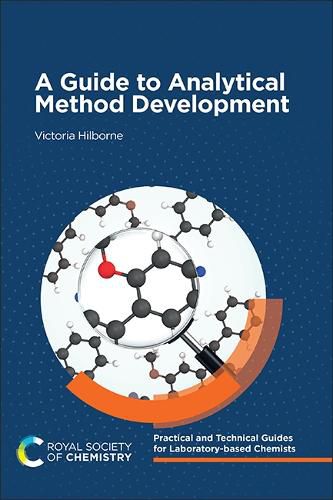Readings Newsletter
Become a Readings Member to make your shopping experience even easier.
Sign in or sign up for free!
You’re not far away from qualifying for FREE standard shipping within Australia
You’ve qualified for FREE standard shipping within Australia
The cart is loading…






Have you been given a sample of unknown matter and don't know where to start with working out what that sample might be?
Knowing where to start when presented with a new chemical measurement problem can be daunting, but this book guides you through the reasonable steps to take to ascertain what a sample might be. From planning and developing appropriate analytical measurement methods to method validation, it fills a gap in the literature where there are few, to no, general guides on what to consider when developing chemical measurement methods. Starting with managing the various complexities of sample matrices, discussion on how to select techniques for the identification and quantification of analytes and, finally, details on assessment of the data to streamline the method development process are provided. Approaches range from sourcing and using established methods to adaptation and innovation in method development. Consideration is also given to what is appropriate to solve the analytical measurement problem whilst minimizing cost and optimizing use of time.
Written for the novice, this book is also appropriate for established analytical chemists looking for new ideas. It will remove the worry of starting a new project or identifying that elusive sample.
$9.00 standard shipping within Australia
FREE standard shipping within Australia for orders over $100.00
Express & International shipping calculated at checkout
Stock availability can be subject to change without notice. We recommend calling the shop or contacting our online team to check availability of low stock items. Please see our Shopping Online page for more details.
Have you been given a sample of unknown matter and don't know where to start with working out what that sample might be?
Knowing where to start when presented with a new chemical measurement problem can be daunting, but this book guides you through the reasonable steps to take to ascertain what a sample might be. From planning and developing appropriate analytical measurement methods to method validation, it fills a gap in the literature where there are few, to no, general guides on what to consider when developing chemical measurement methods. Starting with managing the various complexities of sample matrices, discussion on how to select techniques for the identification and quantification of analytes and, finally, details on assessment of the data to streamline the method development process are provided. Approaches range from sourcing and using established methods to adaptation and innovation in method development. Consideration is also given to what is appropriate to solve the analytical measurement problem whilst minimizing cost and optimizing use of time.
Written for the novice, this book is also appropriate for established analytical chemists looking for new ideas. It will remove the worry of starting a new project or identifying that elusive sample.